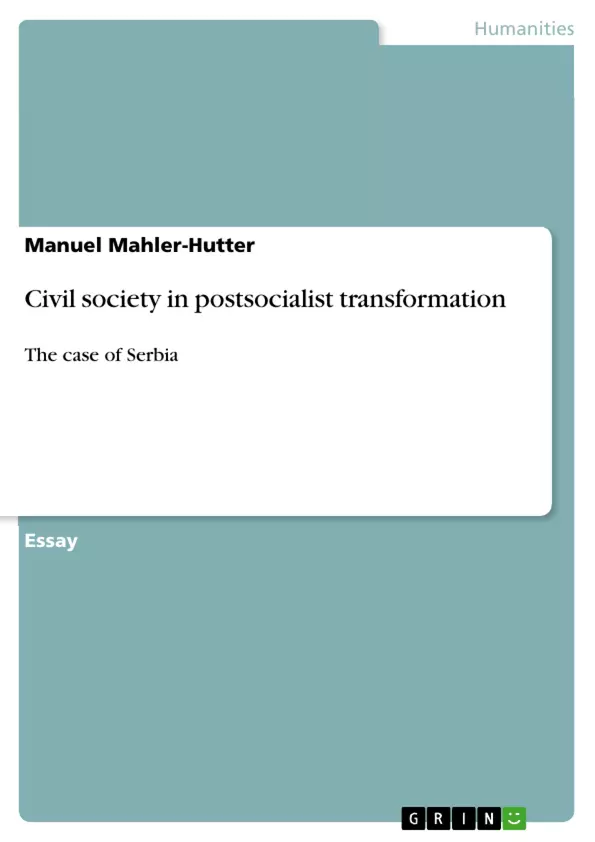The concept of civil society has become very popular in the last decades. The end of communistic governments in the communist countries of the Eastern part of Europe has increased the interest and research on if and how much civil society contributed
to these events.
Under the light of the constant conflict of “civil society vs. the state” a legitimate question might be to which extent civil societies have any right to exist in liberal, so-called western democracies that have allready fullfilled most of the civil society’s demands and is based largely on “the will of the people.”[8]
Serbian Civil society faced in many aspects a historical development sui generis. Being under Austrian and Ottoman rule for a long time, Serbia and its people, as a (and maybe the most dominant) nation in the Kindom of Yugoslavia in the interwar
period were largely occupied with the formation of the state and its complex ethnic
composition.
Inhaltsverzeichnis (Table of Contents)
- Introduction
- The Concept of Civil Society
- Civil Society in Socialist Countries
- The Case of Yugoslavia
- Civil Society in post-socialist transformation
Zielsetzung und Themenschwerpunkte (Objectives and Key Themes)
This text explores the development and challenges of civil society in Serbia during the post-socialist transformation period. The author delves into the concept of civil society, analyzing its historical evolution and contrasting its presence in both socialist and capitalist contexts. The work sheds light on the unique challenges faced by Serbia, marked by a history of conflict and repressive regimes, as well as the legacy of the Yugoslav experience.
- The concept of civil society and its historical evolution
- The role of civil society in socialist countries and the challenges of its development
- The specific case of Yugoslavia and its impact on Serbian civil society
- The difficulties faced by civil society in post-socialist Serbia, including political and economic constraints
- The influence of historical and cultural factors on the development of civil society in Serbia
Zusammenfassung der Kapitel (Chapter Summaries)
- Introduction: This chapter introduces the concept of civil society and its growing relevance, particularly in the context of post-communist transitions. It highlights the ongoing debate about the role and significance of civil society, especially within established democracies. The chapter further outlines the unique historical and political circumstances that shaped civil society in Serbia.
- The Concept of Civil Society: This chapter delves into the philosophical and historical roots of the concept of civil society, tracing its development from ancient Greek and Roman thinkers to modern interpretations. It examines different perspectives on civil society, including those of Hobbes and Marx and Engels, and emphasizes its role as a counterbalance to both state authority and unfettered markets. The chapter also analyzes the challenges of defining civil society and identifies a shared consensus on key elements such as voluntary self-organization, normative consensus, and the role of the educated middle class.
- Civil Society in post-socialist transformation: This chapter focuses on the early years of civil society in Serbia during the 1990s, highlighting the challenges faced by civil society in the context of the Milosevic regime, the disintegration of Yugoslavia, and the ongoing transition to a market economy. It examines the complex interplay of political, economic, and cultural factors that hindered the development of a robust civil society, including state repression, economic hardship, and the influence of nationalist ideologies.
Schlüsselwörter (Keywords)
The text centers around the development of civil society in Serbia during the post-socialist transition. Key concepts include civil society, post-socialist transformation, state-society relations, political repression, economic constraints, cultural factors, nationalism, and the role of the middle class in shaping civil society.
- Quote paper
- Manuel Mahler-Hutter (Author), 2010, Civil society in postsocialist transformation , Munich, GRIN Verlag, https://www.grin.com/document/153546



